Ecuador, a jewel of 109,483 square miles in northwestern South America, sits proudly on the Equator between Colombia and Peru. This enchanting land is home to the majestic Northern Andes, the verdant edges of the Amazon Basin, and a Pacific coastline caressed by both warm and cold ocean currents. Farther out, 600 miles offshore, the legendary Galapagos Islands await—a world of wonder and discovery.
From the towering peaks of the Andes to the vibrant biodiversity of the Galapagos, Ecuador promises an experience unlike any other. Here, ancient cultures thrive alongside stunning natural beauty, inviting you to explore, connect, and marvel. Whether hiking among volcanic landscapes, wandering through historic colonial cities, or encountering wildlife found nowhere else on Earth, Ecuador will leave you inspired and transformed.
Recognized as the first UNESCO World Heritage City, Quito’s colonial center is the most intact and extensive in South America. Cobblestone streets, garden courtyards, and centuries-old Spanish homes set the stage for a journey back in time. Nearly every block reveals a church adorned in gold leaf, with intricate Arabesque patterns and Baroque art that speak to the city’s deep spiritual and artistic roots.
The standout is the Iglesia de la Compañía, a Baroque jewel that took over 160 years to complete. Its gold-covered interior is among the most awe-inspiring in Latin America—a true expression of Baroque artistry and life during the colonial era.Just a few blocks away, Plaza Grande pulses with history. Surrounded by the Presidential Palace, Quito’s Cathedral, and other iconic landmarks, it’s the perfect place to slow down and take in the architecture, heritage trees, and daily life of the city.
From the bell towers and plazas, colonial Quito rewards visitors with sweeping views and endless photo opportunities. And while the sights dazzle, the flavors do too—Ecuador produces some of the world’s finest cacao, and a visit to the historic center often includes a stop for rich, dark chocolate.
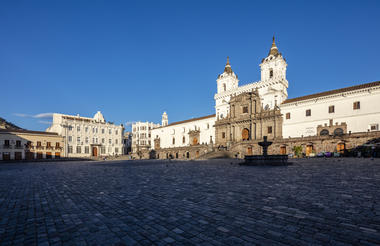


Orellana lies along the northeastern part of Ecuador´s Amazon jungle and is located near the confluence of the Coca and Napo Rivers. It is home to several indigenous nations as the Shuar, Ashuar, Taguaeris, Kichwa and many others that still thrive on living in their native forests.
Orellana is also home to several National Parks as the mega biodiverse Yasuni National Park, the Cuyabeno Wildlife Reserve, and the Sumaco Napo-Galeras National Park.
Orellana province was named after one of history most famous explorers: Francisco de Orellana. Inspired by the tales of “El Dorado's” golden city, Francisco de Orellana and its ill-fated but grandiose voyage led him to become the first European to explore and witness the river maze and numerous civilizations that once populated the Amazon jungle. And ultimately, reach the immense Amazon river.
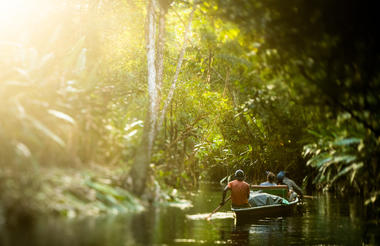
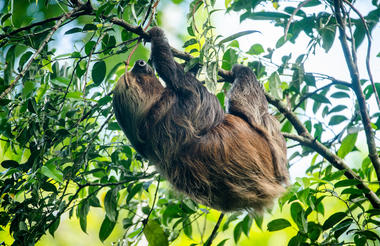
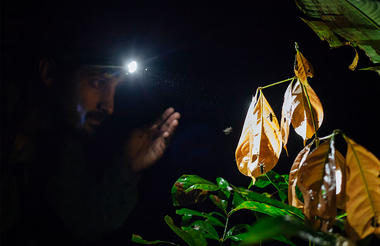
Ecuador’s Amazon Basin is a living masterpiece, considered the most biodiverse region on Earth. In every square meter, life flourishes with a dazzling array of plants, mammals, trees, reptiles, fish, and amphibians—many species are discovered anew each year. From needle-sized orchids to towering trees, the rainforest is a wonder. The Amazon can hold more tree species in one hectare alone than the entire United States.
This lush realm teems with life: pink river dolphins, prehistoric paiche fish, jungle cats like the elusive jaguar, and over 600 bird species, including the hoatzin, a bird seemingly plucked from the age of dinosaurs. Towering forests rise over 50 meters tall, harboring a network of life more intricate than anywhere else on the planet. Here, you’ll journey through emerald canopies, listen to the symphony of macaws and monkeys, and glide across black-water lakes under a star-studded sky. Visit clay licks to witness thousands of vibrant parrots in action or climb observation towers for breathtaking views of the endless green horizon. The Amazon is not just nature at its peak but also a cradle of human innovation. Long before modern civilization, ancient communities shaped this land. The first cacao cultivation, early pottery, and advanced farming techniques emerged here thousands of years ago. Even today, its diverse cultures thrive, preserving ancient wisdom and languages like Wao, where the word for “five” is synonymous with “right hand.” Exploring Ecuador’s Amazon is to step into a world both ancient and alive, where every sound, sight, and story deepens your connection to the heart of the Earth.



Occupying roughly seven million square kilometres of surface area, the Amazon Basin is a lush wilderness that encompasses the planet’s largest rainforest and the world’s second longest river. Extending across sections of Brazil, Bolivia, Colombia, Ecuador, Guyana, Peru, Suriname and Venezuela, it is a region of thriving biodiversity and striking beauty. The basin features a staggering array of plant and animal life, and the intrepid travellers who visit here have the chance of encountering such exotic creature as anacondas, piranhas, sloths, capybaras, and – if you’re lucky – even elusive jaguars, pumas and ocelots.
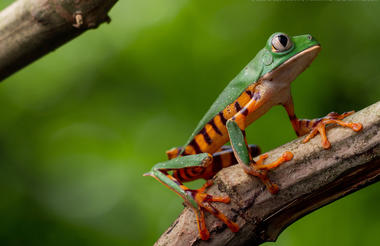
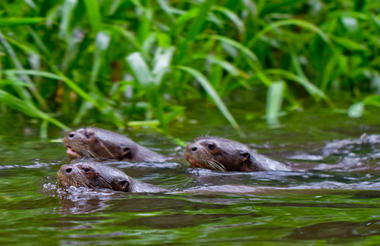
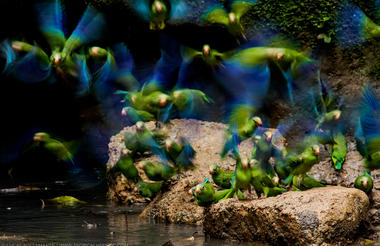
Pañacocha is a magical place, a flooded forest deep in the Yasuni National Park. During a hike, it is not uncommon to find the cinnamon tree. Francisco de Orellana, the Spanish explorer and the first European to explore the Amazon river, once went deep into the amazon maze after the mystical “land of cinnamon.” From September to November, you can witness a Sci-Fi scene when cotton trees drop their seeds as tiny balls of fluff floating through the air.
The flooded forest offers a fantastic chance for kayaking, or for those who are more adventurers, maybe swim in its dark waters and share and splash with the resident piranhas. Water looks very dark due to an enormous amount of sediments and plant tannins, responsible for that tea-like appearance.
While kayaking, the best way to discover the lake, you will find that every centimeter of the shores of Pañacocha and its floating islands are filled with infinite vegetation and wildlife. The lake is home to the very elusive pink river dolphin. Residents of Pañacocha are jaguars, ocelots, over twelve species of monkeys and more than 550 species of birds. Pañacocha is part of a biological corridor that connects different areas of the Amazon jungle, and serves to rare or endangered species.
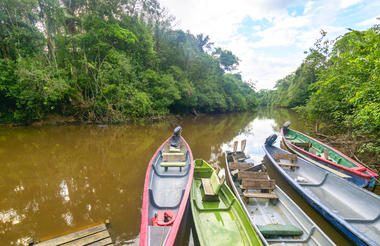
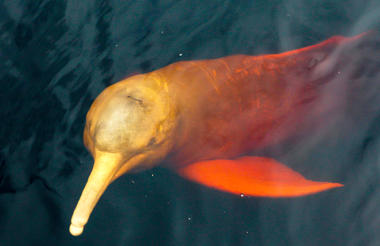
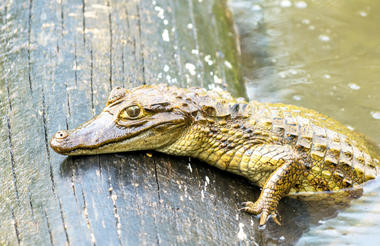
As previously described
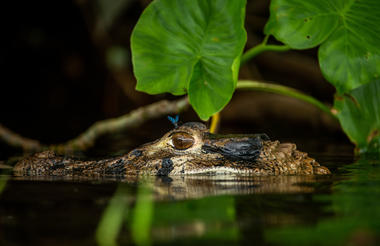
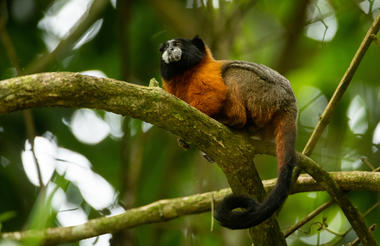
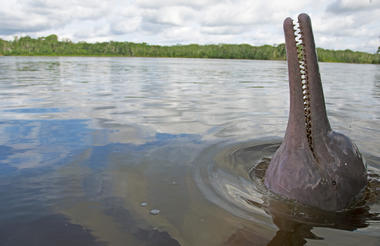
Staying in a comfortable country inn or hotel near the airport the night before avoids our guests' long drives and the city traffic. Also, there will be no need to wake up unnecessarily early to travel to the airport, allowing them to enjoy a better night’s sleep and feel more refreshed for your next day's flight or adventure.
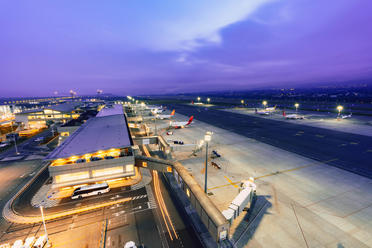
As previously described






